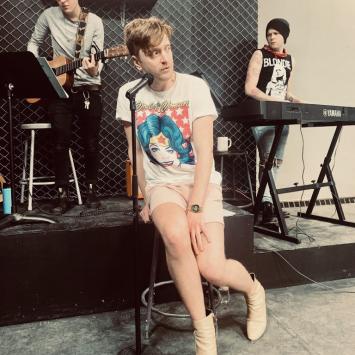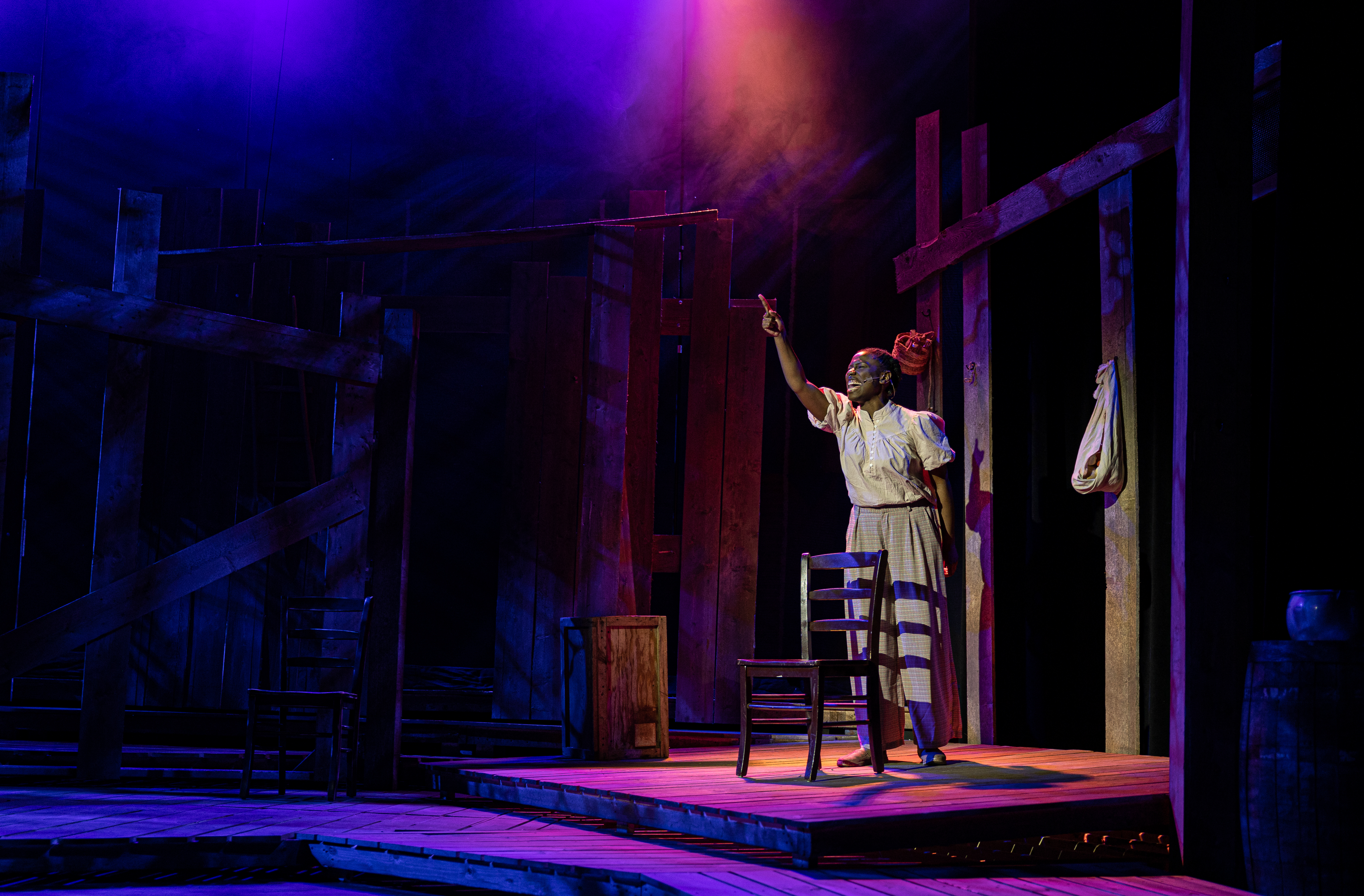Director Julia Deter on "Hedwig & the Angry Inch"
January 11, 2019 by Guest Contributor

She makes her entrance like a star dying to be born – goose-stepping through the audience with the arrogant aplomb of Marlene Dietrich and Jim Morrison; decked out like a trailer-park tart’s idea of a glam-rock fox, in stone-washed denim, an Aryan-yellow, blow-dried mane and red-glitter lipstick; accompanied by the refried-Queen strains of "America the Beautiful" and marvelously surly introduction by her crusty Serbian valet boy toy Yitzhak: "Ladies and gentlemen, whether you like it or not – Hedwig!"
That’s how Rolling Stone described the first moments of the innovative, then-new rock musical HEDWIG AND THE ANGRY INCH. It was a show that changed everything. Arguably for the first time, real rock and roll – glam, heavy metal, punk – had come to the American musical theatre.
Glam rock was invented as a rejection of the false sincerity and simplicity of folk and protest rock. In a world in which "authenticity" was the hallmark of quality, glam admitted its falseness; it spit on authenticity and borrowed from everything. It celebrated the mask, the playing of a role, and in admitting its artificiality, it was really the most honest of all. Glam also erased the line between the sexes. It is the only genre and the only time in rock and roll history in which gender lines were erased; there was no male and female in glam. It was a language made for Hedwig’s story.
HEDWIG AND THE ANGRY INCH came to life as a queer nightclub act in late-90s New York. Originally slow to catch on, it was seen as too musical theater for the punk rock crowds, and too punk for the musical theater set. Eventually, the show developed a cult following, and transferred to Off-Broadway. A film adaptation was made, and it came back to the stage in 2014, this time on Broadway and London’s West End. It went on to win an Obie Award, an Outer Critics Circle Award, Drama Desk Awards, and multiple Tony Awards.
HEDWIG owes much of its appeal to the universal themes it embodies. On the surface, most of us cannot relate to being a gay, East German victim of an unwanted and botched sex change operation. But Hedwig’s struggles are not unique -- the quest for individuality, the struggle to accept oneself, and the desire to find love. Time Magazine called HEDWIG, "a poignant mediation on loneliness, gender confusion, and the Platonic notion that sex is the effort to reconnect two halves of one ideal being."
Themes of dualism run throughout the show; the divided self, the divided city of Berlin, divided gender. A wall as a symbol of division is unfortunately not foreign to our current cultural conversation; neither is the conversation surrounding gender identity. HEDWIG embraces these themes, and asks us to examine them on a more personal level. Are the barriers between us, ourselves, our other halves, artificial? What happens to us when we tear them down?
John Cameron Mitchell, writer and creator of HEDWIG, said of the show, “The real test comes when we drop [the barriers and facade] and we see what’s underneath, including the scars, including the complexity of what we’ve been through ... There’s an understanding that perhaps she can let go of the bitterness, let go of the victimhood, let go of the pronouns, let go of whatever. In the end, she walks into the world naked, as if to say, ‘This is me.’”
Julia Deter
Julia Deter returns to The Umbrella as Director of Hedwig & the Angry Inch, running at The Umbrella Annex January 18-February 9. Previously for The Umbrella, she directed Singin’ in the Rain, The Rocky Horror Show, and Ragtime, for which she won both Best Director and Best Musical. Other credits include The Secret Garden for Concord Players, and she earned 2016-17 DASH award nominations for Best Direction (Musical) and Best Choreography for Shrek The Musical with The Wellesley Players.
Rehearsal photo by Julia Deter






